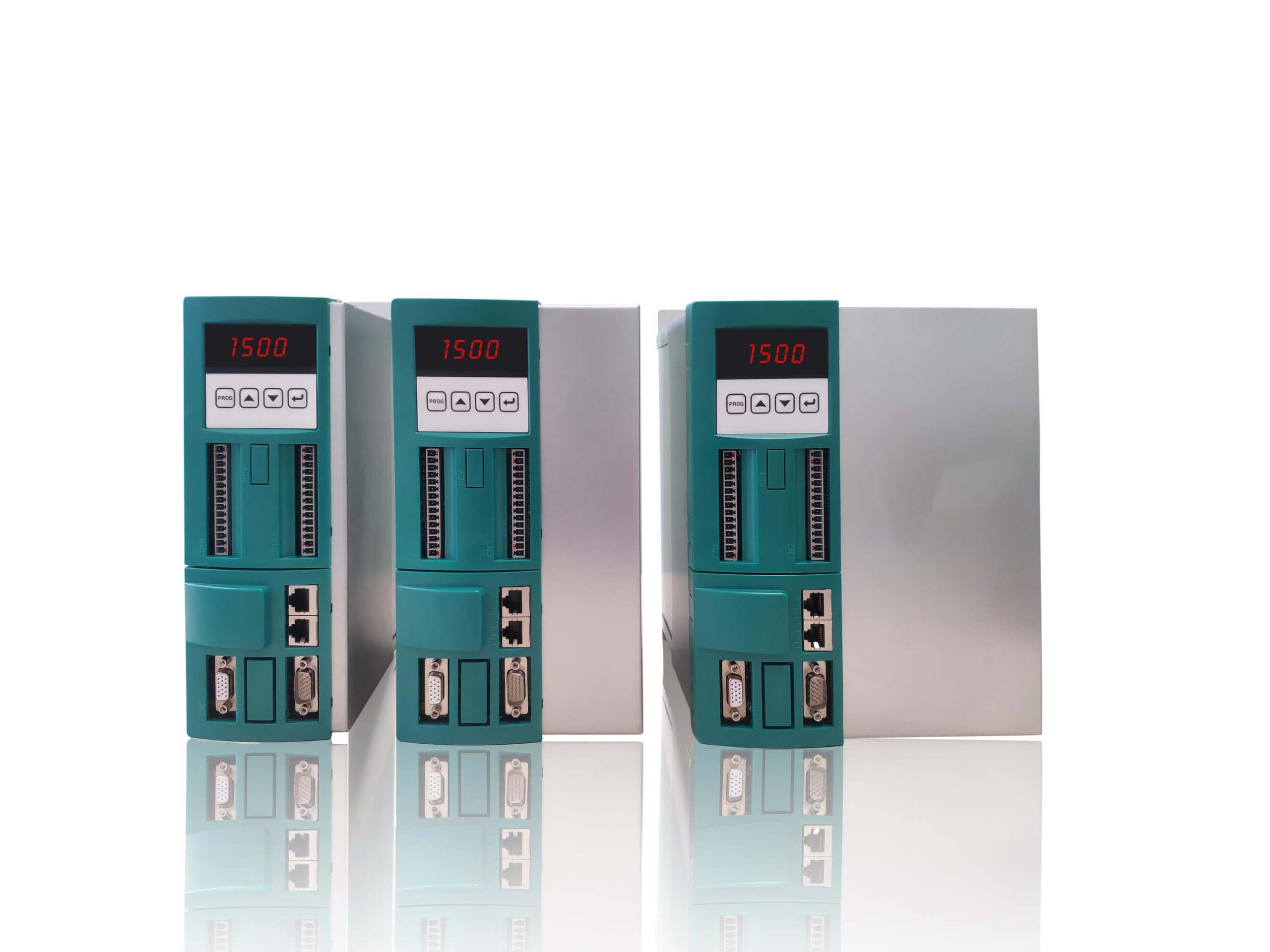
What is a variable frequency drive?
A VFD is a device that changes direct current into adjustable frequency alternating current to control motors. These VFDs not only convert the power, but also boost and condition it before sending it to the AC motor. VFDs do this by changing the magnetic field on the stator and rotating its angle.
VFD drives typically have a three-phase voltage supply to power the motor. VFD drives consist of the following important parts:
The rectifier converts the incoming alternating current (AC) into direct current (DC). Diodes or thyristors usually achieve this process.
The DC intermediate circuit stores and smooths the rectified DC current. It uses filters like capacitors or inductors to minimize fluctuations. This part ensures that the subsequent inverter has a stable DC power supply.
The most important part is the inverter, which converts DC into variable frequency and variable voltage AC. The inverter includes key parts like the control unit, protection circuit, cooling system, and user interface.
- 1. The control unit acts like the brain of the variable frequency drive, managing how the whole system operates. The control unit gets user signals and changes the output frequency and voltage accordingly.
- 2. A variable frequency drive generates heat while it works. The cooling system helps remove this heat. This keeps the equipment at a safe temperature. Cooling methods include fan cooling, natural convection cooling, liquid cooling, etc.
- 3. The human-machine interface lets the user control the variable frequency drive. It has a screen, buttons, and knobs for adjusting settings, checking status, and finding problems.
A variable speed drive (VFD) can be used for most AC motors. However, not all AC motors can use VFD.
You cannot use VFD for motors that require high starting torque. VFD also cannot be used to run induction motors or AC induction motors because the variable frequency output produced by VFD does not change smoothly. VFDs can only control synchronous AC motors, and you must not use VFDs for DC motors.
What is the Advantages of VFDs?
VFDs can save energy by changing the speed of the motor. This reduces energy use when the motor doesn’t need to run at full speed.
VFDs help motors last longer by starting and stopping them smoothly. This reduces wear and tear on equipment. It also prevents sudden jolts.
VFDs offer precise control of motor speed and torque, ideal for applications with specific speed needs.
VFDs allow motors to start slowly, preventing a sudden surge of current. This reduces stress on both the power system and the motor itself.
What is the Disadvantages of VFDs?
Variable frequency drives are more expensive to purchase and install compared to traditional motor control methods. These traditional methods include direct starting and reduced voltage starting.
Professional technicians require more complex design and operation of variable frequency drives compared to traditional controllers for installation, commissioning, and maintenance. Variable frequency drives can save energy. However, they still lose some energy during conversion. This is especially true when they operate at low loads or low speeds.
Variable frequency drives can make noise when they switch quickly, especially at low speeds or frequencies.
Despite some drawbacks, the advantages of VFDs, especially in energy efficiency and equipment control, usually outweigh the limitations.

